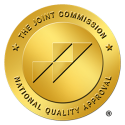Opioids, including Roxicodone or Roxys, are frequently prescribed for severe pain management. With the multitude of opioids on the market, it’s important to understand what sets Roxys apart. This guide will explore the specifics of Roxicodone, cover the signs of Roxy abuse, examine how long Roxys stay in your system, assess the dangers of their use, and describe the treatment paths for overcoming Roxy addiction. Whether you’re concerned about yourself or a loved one, this information aims to provide clarity and direction on managing and addressing issues related to Roxy use.
What Are Roxys?
Roxicodone, often referred to as Roxys, is a specific type of the opioid medication Oxycodone that is formulated for quick release to provide fast pain relief. These tablets are typically prescribed to treat both acute and chronic pain, sometimes alongside other opioids. Roxys alleviate pain by attaching to specific receptors in the brain, central nervous system, and gut, thereby decreasing the sensation of pain from moderate to severe levels. While they are highly effective at pain management, it’s critical to understand that opioids like Roxys mitigate pain symptoms without treating the root cause. Recognized as one of the most potent prescription pain relief drugs, their use requires careful management due to the high risk of dependency.
What Is Roxicodone Abuse
Roxicodone Abuse, including taking it in manners not intended by a prescription or for reasons other than medical need, poses a significant problem across the United States. Contrary to the misconception that prescription drugs are less dangerous than illegal substances, Roxicodone, when abused or combined with drugs such as benzodiazepines or methamphetamine, can lead to deadly outcomes.
Addiction to Roxicodone often begins with its prescription for legitimate pain relief. However, for some individuals, this medical use can quickly turn into a dependency. The body’s tolerance to the drug can increase, requiring larger doses to achieve the same pain relief, or individuals might chase the drug’s euphoric effect to numb emotional pain, well beyond the cessation of physical symptoms. In pursuit of a stronger high, those struggling with addiction may begin crushing and snorting the pills or dissolving them for injection, practices that dramatically escalate the overdose risk and deepen the addiction’s hold.
What’s The Difference Between Roxicodone Vs. Oxycodone?
The key difference between Roxicodone and Oxycodone centers on how quickly they provide pain relief. Roxicodone is designed for immediate release, offering rapid relief from pain in as little as 15 minutes. However, its effects are short-lived, typically diminishing after a few hours. This makes Roxicodone ideal for managing sudden, acute pain episodes but requires more frequent administration.
In contrast, Oxycodone is crafted for a slow, extended release, with pain relief becoming apparent about 30 minutes to an hour after taking it. The advantage of Oxycodone is its prolonged effect, maintaining pain relief for up to 6 hours or more, making it better suited for chronic pain management. This extended-release mechanism of Oxycodone ensures a steady level of pain control throughout the day.
Is Roxicodone Addictive?
If you’re asking, “Are Roxy’s Addictive?”, the answer is unequivocally yes. Roxicodone’s propensity for addiction stems from its rapid and potent alleviation of pain. The immediate euphoria it induces is often perceived as highly pleasurable, which the brain marks as a desirable experience, intensifying the compulsion to relive this sensation. As a result, individuals might find themselves using Roxicodone recreationally, well beyond its intended medical application, to chase the euphoric high it provides. This cycle can quickly evolve into addiction, as the drug’s ability to produce such prompt and intense pleasure makes it highly prone to misuse. This reinforces the addictive potential of Roxicodone, compelling users to continuously seek the euphoric experiences it delivers, thereby amplifying the likelihood of developing a dependency.
Causes Of Roxicodone Addiction & Abuse
The journey towards Roxicodone abuse and addiction is often influenced by a combination of genetic, neurological, environmental, and psychological factors, each contributing to an individual’s susceptibility to dependence:
- Genetic Factors: Research underscores the significant role genetics play in addiction risks. Having family members who have faced addiction increases one’s own risk of developing addictive behaviors.
- Neurological Imbalance: Roxicodone acts on the brain and central nervous system. It is believed that individuals with certain neurological imbalances might be more inclined to misuse Roxicodone, seeking to correct these imbalances through substance use.
- Environmental Factors: Exposure to environments where drug use is common or normalized can greatly influence the likelihood of substance abuse. Early exposure, particularly during formative years, can set the stage for addiction later in life.
- Psychological Components: There is a notable link between mental health issues and substance abuse. People grappling with mental health challenges may resort to using substances like Roxicodone for relief, often without professional guidance.
Acknowledging and understanding these factors is vital for the effective and empathetic treatment of Roxicodone addiction.
Signs And Symptoms Of Roxy Abuse
Recognizing the signs and symptoms of Roxy abuse is critical for early intervention and treatment. The impact of Roxy abuse varies widely based on how much and how often the drug is used, as well as the user’s tolerance. Here’s what to look out for:
Emotional and Mood-Related Symptoms
- Episodes of depression or heightened anxiety.
- Erratic mood swings, including irritability and anger.
- Uncharacteristic euphoria or an overly positive sense of well-being.
Behavioral Signs
- Doctor shopping to obtain multiple prescriptions.
- Altering or forging prescriptions.
- Making frequent and vague emergency room visits.
- Claiming prescriptions are lost to receive more medication.
- Borrowing or stealing Roxicodone or other opioids.
- Engaging in illegal activities, like pharmacy theft.
- Buying Roxicodone through online sources.
- Changes in speech patterns.
- Failing to fulfill obligations at work, school, or in social circles.
- Losing interest in previously enjoyed activities.
- Facing financial issues directly related to drug procurement.
- Showing signs of nervousness, restlessness, and a decreased appetite.
Physical Symptoms
- Lowered breathing rate and susceptibility to respiratory infections.
- Experiencing seizures, significant weakness, and dizziness.
- Slow heartbeat, gastrointestinal issues like nausea and constipation.
- Increased sweating, itching, and visual disturbances.
- Life-threatening conditions such as respiratory arrest, shock, heart attack, and chest pain.
- Fatigue and falling asleep at inappropriate times.
Psychological Effects
- Hallucinations or delusional thinking.
- Confusion, mental fog, or experiencing psychosis.
These varied symptoms highlight the complexity and danger of Roxicodone abuse, emphasizing the urgent need for supportive intervention and professional treatment for those affected.
How Long Do Roxy’s Stay In Your System?
The presence of Roxicodone in your system varies widely, influenced by factors like how much was taken, how often it was used, individual metabolism rates, and others. Here’s a quick guide:
- Half-Life: The half-life of oxycodone falls between 3.5 and 5.5 hours, meaning it takes this long for your body to reduce the present amount by half.
- Full Elimination: It generally takes 5 to 6 half-lives for a drug to be completely eliminated from the body. For oxycodone, this equates to roughly 17.5 to 33 hours from the last dose.
- Urine Tests: Oxycodone can be detected in urine for 3 to 4 days after the last use, though this timeframe can vary from person to person.
- Blood Tests: It can be found in blood tests for around 24 hours post-use, with variability depending on specific conditions and amounts used.
- Saliva Tests: In saliva, oxycodone might be detectable from 1 to 4 days after the last ingestion.
- Hair Tests: Hair follicle tests offer the longest detection period, capable of tracing oxycodone usage up to 90 days or more beyond the last consumption.
Side Effects Of Roxy Addiction
Extended misuse of Roxicodone (Roxy) can result in dire and sometimes fatal consequences, underscoring the perils of addiction. Notable side effect of roxy addiction include:
- Respiratory issues and frequent infections.
- Profound fatigue and constant weariness.
- Severe chest pain indicative of underlying problems.
- Episodes of seizures indicating neurological distress.
- Continuous itching, suggesting systemic reactions.
- Increased incidence of heart attacks.
- Respiratory failure, significantly impairing breathing capabilities.
- Frequent vomiting, disrupting normal life.
- Emergence of psychosis, affecting mental health.
- Uncontrollable sweating, indicating autonomic disruption.
- Challenges in staying awake, affecting daily functionality.
- Widespread body pain, diminishing quality of life.
- The ominous possibility of entering a coma.
- The ultimate consequence of death.
- Exacerbation or onset of Major Depressive Disorder.
The grip of addiction makes it exceedingly difficult for individuals to cease Roxicodone usage on their own. Independent attempts to withdraw often lead to unpleasant withdrawal symptoms, compelling a return to drug use. This cycle highlights the imperative for expert intervention and support to navigate the path to recovery successfully.
How Long Do The Effects Of Roxicodone Last?
The pain relief duration provided by Roxicodone varies based on several factors, such as the specific dosage, the drug’s formulation, and individual differences in metabolism, age, weight, and overall health condition.
Immediate-Release Roxicodone
- Starts working within 15 to 30 minutes after administration.
- Peak effects are usually experienced within 1 to 2 hours.
- Pain relief typically lasts for about 4 to 6 hours.
Controlled-Release Roxicodone
- Takes somewhat longer to commence action compared to the immediate-release version.
- Peak relief is generally achieved 3 to 4 hours post-dosage.
- Provides pain alleviation for approximately 12 hours.
Factors Influencing Effect Duration
- Metabolism: Individuals with quicker metabolisms may experience shorter durations of effect.
- Liver and Kidney Function: Reduced functionality in these organs can delay the drug’s breakdown and elimination, prolonging its presence and effects.
- Tolerance Development: Frequent use may lead to tolerance, requiring higher doses to achieve the same relief.
- Drug Interactions: The presence of other medications can influence Roxicodone’s effectiveness and lasting time.
It’s imperative to follow the prescribed guidelines to avoid adverse effects, particularly the danger of severe respiratory depression. Mixing Roxicodone with alcohol or other depressants heightens the risk of critical side effects and is strongly discouraged.
Withdrawal Symptoms Of Roxicodone Addiction
Facing Roxicodone withdrawal is a daunting challenge due to the array of severe symptoms that emerge when discontinuing use. Medical guidance is essential during this period to mitigate the adverse effects and support the individual’s health.
Symptoms commonly associated with Roxicodone withdrawal are:
- Nausea and vomiting, causing significant discomfort.
- Excessive sweating, regardless of the ambient temperature.
- Chills without a fever, creating discomfort.
- A noticeable decline in physical strength, hindering daily tasks.
- Symptoms resembling a cold, such as a runny nose.
- Intense and debilitating joint pain.
- A rise in blood pressure, which could threaten heart health.
- An increase in breathing rate, which may induce shortness of breath.
- Accelerated heart rate (tachycardia), leading to anxiety and discomfort.
- Mood swings marked by irritability, complicating social interactions.
- Deep depression, fostering a profound sense of despair.
- Heightened anxiety, intensifying feelings of distress.
These withdrawal indicators signal the body’s dependence on Roxicodone and the challenges involved in cessation, underscoring the critical need for professional intervention to navigate detoxification safely and more comfortably.
Dual Diagnosis And Roxicodone Addiction
Roxicodone addiction frequently intersects with mental health issues, revealing the intricate nexus between substance dependency and psychological well-being. Those battling Roxy addiction often grapple with concurrent mental health conditions, a scenario known as dual diagnosis. Common mental health challenges associated with Roxy addiction include:
- Depression
- Anxiety disorders
- Borderline personality disorder
- Bipolar disorder
- Obsessive-compulsive disorders
- Post-traumatic stress disorder (PTSD) and Trauma
- Schizophrenia
Acknowledging this overlap is crucial for effective treatment. An integrated care approach, targeting both the addiction to Roxicodone and the accompanying mental health disorders, is pivotal for a comprehensive recovery journey, ensuring both aspects are treated concurrently for optimal outcomes.
What Are Treatment Options For Roxy Addiction?
Treatment options for Roxy addiction start with a medically supervised detoxification, an essential phase where the dependency on Roxys is gradually reduced under close medical supervision to minimize withdrawal symptoms. At Iris Wellness Group in Chattanooga, TN, we offer outpatient detox services that include the use of Medication-Assisted Treatment (MAT) or medications like Vivitrol to ease withdrawal discomfort, ensuring a more manageable detox process.
Post-detox, individuals can choose between residential and outpatient treatment programs, designed to meet their unique recovery requirements. Those facing mental health challenges alongside addiction, such as depression or anxiety, may benefit from our dual diagnosis treatment approach, addressing both issues simultaneously for a more holistic recovery.
Professional assistance is vital during both the detoxification and rehabilitation phases to prevent relapse and secure a successful, long-term recovery journey. Iris Wellness Group is committed to providing the support and care needed to navigate this path to sobriety.
Roxy Addiction Treatment In Chattanooga, TN
Understanding the addictive potential of Roxys marks the beginning of your journey towards recovery. At Iris Wellness Group in Chattanooga, TN, we acknowledge the courage it takes to seek help, and we’re here to guide you through your path to wellness. We provide comprehensive outpatient care for both adults and teens, including standard outpatient programs (OP), intensive outpatient programs (IOP), partial hospitalization programs (PHP), and medically supervised outpatient detox services, designed to safely navigate the withdrawal process.
Our approach to treatment is customized to meet the individual needs of our clients, ensuring a tailored recovery experience. Whether you’re stepping down from more intensive care or starting your recovery with outpatient services, our dedicated team is committed to offering the support you need. For more information on our Roxy addiction treatment options, including detox and various levels of outpatient care, please reach out to our admissions team at 423-919-9549 or fill out our online contact form. Begin your journey to a healthier future with Iris Wellness Group.










